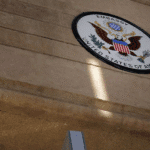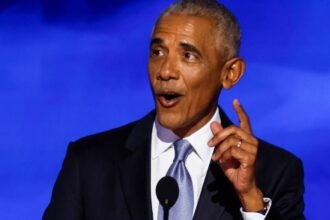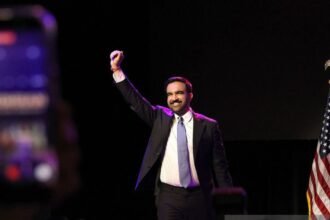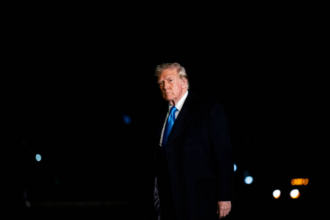A turning point in U.S. federal-state relations, the latest legal conflict over the Trump National Guard order signals that Former President Donald Trump overreached his legal authority, according to a federal judge, by deploying California’s National Guard without the governor’s approval. This ruling has spurred a furious discussion on presidential overreach and constitutional power. The case raises important issues about the restrictions on presidential authority as both sides get ready for more appeals. The decision may also establish a long-standing precedent that influences how future emergencies are managed nationwide.
- For what reason did the Court block the Trump National Guard Order?
- How Does the Ruling View Federal Authority?
- Was there a legal basis for the Trump National Guard order?
- What response has California taken to the Trump National Guard directive?
- How did the Court decide?
- What comes next in the legal battle concerning the National Guard?
- How Is Public Opinion Divided on the Trump National Guard Order?
- Could this ruling affect future federal-state interactions?
- What wider consequences follow for civil rights and national security?
For what reason did the Court block the Trump National Guard Order?
A federal court in a historic ruling has temporarily stopped the Trump National Guard order after deciding that California’s National Guard’s deployment to Los Angeles was unlawful and unapproved. Bypassing California Governor Gavin Newsom’s permission, the judge decided former President Donald Trump overreached his jurisdiction. Reacting quickly, the state filed a contesting the federal government’s actions as unlawful and unlike in modern administration.
Protests connected to immigration policy in Los Angeles led to this court fight. Trump said the deployment was required to prevent the city from “burning down.” California officials responded, however, that although strong, local authorities were handling the demonstrations, and federal military action was not needed.
How Does the Ruling View Federal Authority?
The result stresses constitutional checks and balances. The judge said expressly that until particular federal circumstances are satisfied, the president is not automatically the commander-in-chief of a state’s National Guard. The court decided in this case that these requirements were lacking. Under that context, he said Trump’s actions were illegal, citing Congressional legislation defining the limitations of presidential power over state troops.
The judge decided on Thursday, but he postponed implementing the decision until Friday afternoon to provide the federal government time to appeal. The Trump government quickly registered an appeal, indicating that legal wrangling is far from done.
Was there a legal basis for the Trump National Guard order?
Using a provision allowing the president to federalize the National Guard in cases of revolt, Trump’s government claimed, butt California’s lawsuit questioned the validity of applying this law. The state contended that although hundreds of people were arrested and major roadways were disrupted, the demonstrations did not constitute a revolt worthy of federal action.
In court, a Justice Department attorney contended that even if Newsom protested, Trump acted within his authority and that he had been advised. The judge disagreed, citing the U.S. Constitution and underlining that the powers of a president are limited. Carrying a pocket copy of the Constitution, the judge underlined once more that the United States runs on a constitutional framework rather than under the power of an unbridled presidency.
What response has California taken to the Trump National Guard directive?
Shortly after the decision, Governor Gavin Newsom posted on social media, saying, “The military belongs on the battlefield, not on our city streets,” so affirming a basic reality. He underlined that local and state governments are qualified to control internal conflicts without needless federal intervention.
California’s legal action made it abundantly evident that governors have historically deployed the National Guard, trained for combat roles, for disaster relief and municipal situations. Rare and historically important are deployments without governmental permission; last seen during the civil rights movement around 50 years ago.
How did the Court decide?
Over the hearing, the judge mostly depended on constitutional values. He firmly separated state autonomy from executive control. Declaring, “That’s the difference between a constitutional government and King George,” he reminded the court that the American system was intended to stifle excess.
The court’s reading questions a more expansive story of presidential power. The Constitution provides the guiding structure even during national upheaval. This ruling emphasizes how any Trump National Guard directive had to fit these legal frameworks if it is to stand. Here is the link to our article on Trump Sentencing Delay
What comes next in the legal battle concerning the National Guard?
The legal dispute is not resolved, even though the decision benefits California. The appeal of the federal government can turn around the ruling or prolong the legal conflict into higher courts. Should the matter proceed to the Supreme Court, it could establish a fresh precedent on federal and state authority over armed forces.
Some of the 4,000 National Guard troops and 700 Marines assigned under Trump’s orders are still on duty. Legal experts and advocacy organizations have civil liberty issues over reports that some have been approved to hold people until police show up.
The result of this case could have broad effects on state-federal relations as well as on future protest reactions and military participation in civil affairs.
How Is Public Opinion Divided on the Trump National Guard Order?
Public view seems to be divided. Some people welcome the government intervention since they believe that sometimes strict actions are necessary to bring about peace in turbulent circumstances. Others say it creates a risky precedent by diminishing state sovereignty.
Legal academics and human rights activists have expressed worries that deploying federal soldiers to municipal affairs compromises democratic procedures. Many contend that until states specifically ask for federal assistance, local law enforcement should continue to handle settling civil disturbances.
Concurrent with this, the Trump National Guard directive has sparked discussions about the boundaries of presidential authority, particularly in light of state officials who actively oppose such policies. In the larger debate on federalism and constitutional rights, this confrontation has evolved as a flashpoint.
Could this ruling affect future federal-state interactions?
Indeed, rather greatly. The court’s ruling to reject the Trump National Guard directive marks a reinforcement of state power, particularly in peacetime or confined disturbance. Should this decision be sustained, it may discourage next administrations from avoiding state governments under like conditions.
This case might also inspire a reassessment of the laws allowing federal authority over the National Guard, particularly with relation to the requirements for declaring a “rebellion.” More strict control and clearer definitions could become essential to stop abuse.
What wider consequences follow for civil rights and national security?
Deploying military forces domestically raises serious concerns. While national security is essential, protecting civil liberties is equally vital. The judge’s decision reflects a careful balance, affirming that the constitutional order must prevail even in times of crisis. Though the Trump National Guard order aimed to support immigration enforcement and restore calm, its rejection underscores the importance of legal compliance. Deviating from established laws can erode public trust and institutional integrity. As the legal battle continues, the outcome could shape the future of American federalism.








